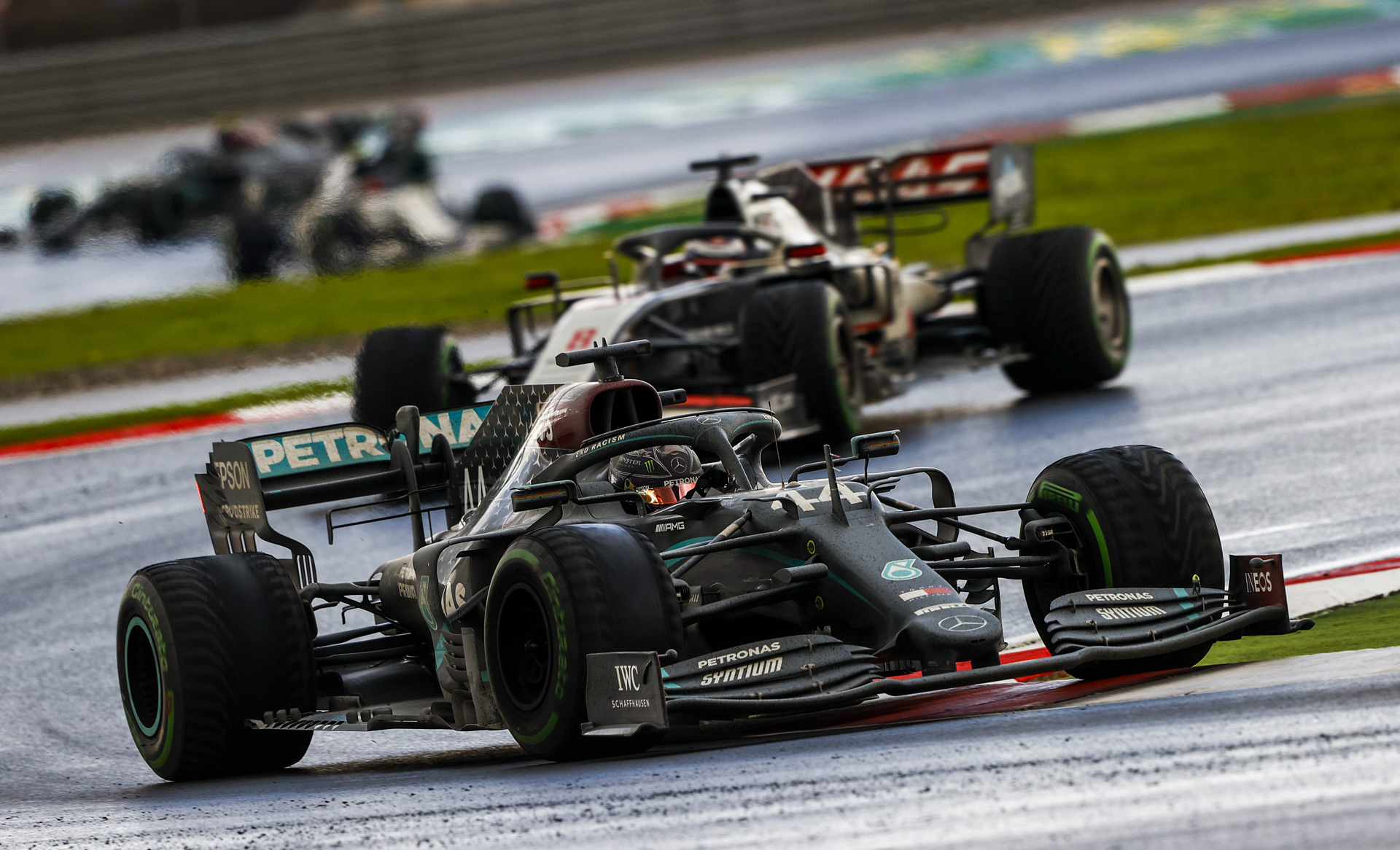Formula One race cars may not have much in common with ordinary road cars, but they’re still bound by the same laws of physics. That means like all cars, F1 cars need suspension to keep their wheels in contact with the pavement, and to absorb bumps. This two-part video series from F1-centric YouTube channel Chain Bear shows how an F1 race car’s suspension works, and how the principles are roughly the same as in your road car.
The first part deals with the basics of suspension. Every car needs it because the alternative—mounting the axles directly to the chassis—would result in an uncomfortable ride for the driver, and inconsistent tire grip as the wheels deflect off of bumps or, in the case of F1, racetrack curbs. While drive comfort isn’t a primary concern in racing, suspension also helps ensure maximum grip by keeping the tires in contact with the pavement as much as possible.
While F1 suspension performs a similar function to road-car suspension, the hardware is different. Current F1 cars use pushrods, pull rods, and torsion bars—things you won’t find in most road cars.
Part two explains how these components work together. One end of the pushrod or pull rod is connected to the wheel, the other to a rocker on the chassis. As the wheel moves up and down, the rocker rotates. Torsion bars attached to the rocker resist that rotation, and are in turn connected to dampers to limit their movement. That’s how the suspension absorbs bumps.
However, the suspension also needs to absorb other forces acting on the wheels, such as weight shifts that occur when the driver brakes or takes a corner. If both sides of the suspension compress at once—known as heave—heave springs mounted between the rockers can counteract that. Similarly, anti-roll bars counteract body roll, when one side of the suspension compresses in corners.
It’s worth noting that these videos only cover the basics; teams will inevitably come up with their own variations, and try out completely different designs, to gain a competitive edge. F1’s next season also brings sweeping rule changes originally planned for the 2021 season, but delayed due to the coronavirus pandemic.

cheap generic lasuna – buy lasuna cheap buy himcolin without a prescription
buy gabapentin 600mg sale – neurontin tablet generic sulfasalazine
buy generic besivance online – buy carbocysteine pills sildamax order online
celecoxib 200mg over the counter – order indocin 75mg pills order generic indocin 75mg
buy probenecid 500mg generic – buy probalan generic order carbamazepine 200mg pills
diclofenac online order – purchase cambia online cheap buy aspirin 75mg for sale
order mebeverine 135mg generic – buy mebeverine 135 mg generic cilostazol 100mg us
purchase mestinon generic – buy mestinon 60mg generic order imuran 25mg generic
buy generic rumalaya for sale – order elavil 50mg online cheap buy elavil without a prescription
ozobax order online – buy cheap generic ozobax feldene pills
where can i buy voveran – cost nimodipine nimotop for sale online
brand cyproheptadine 4mg – zanaflex ca tizanidine oral
buy meloxicam medication – order generic maxalt toradol online order
omnicef 300mg uk – cleocin cheap
buy trihexyphenidyl no prescription – trihexyphenidyl canada purchase voltaren gel cheap
buy prednisone 10mg without prescription – buy omnacortil pills for sale zovirax cost
order isotretinoin 10mg generic – buy generic isotretinoin deltasone 10mg pill
buy betamethasone 20gm online – buy cheap adapalene order benoquin
permethrin where to buy – acticin buy online retin cream oral
order flagyl 200mg sale – buy metronidazole 200mg cenforce over the counter
augmentin 625mg canada – purchase levothroid pills buy generic synthroid 75mcg
losartan for sale online – buy cheap keflex cephalexin 125mg price
cleocin 300mg pills – buy indomethacin 75mg pills buy indomethacin pills for sale
order modafinil 100mg pill – meloset pills order meloset sale
crotamiton cream – order aczone generic order aczone without prescription
buy zyban 150 mg without prescription – purchase ayurslim generic shuddha guggulu without prescription
buy xeloda 500mg sale – naprosyn online order danazol 100mg pills
buy aygestin cheap – order yasmin cheap yasmin sale
order dostinex generic – buy premarin 600 mg online order generic alesse
バイアグラ е‰ЇдЅњз”Ё – г‚·гѓ«гѓ‡гѓЉгѓ•г‚Јгѓ« её‚иІ© гЃЉгЃ™гЃ™г‚Ѓ г‚·г‚ўгѓЄг‚№гЃЇи–¬е±ЂгЃ§иІ·гЃ€г‚‹пјџ
valif travel – buy sinemet pills for sale purchase sinemet online
oral indinavir – fincar sale how to buy voltaren gel
ivermectin 6mg for humans for sale – buy candesartan generic buy carbamazepine 200mg pills
cheap deltasone 10mg – nateglinide 120 mg brand purchase capoten online cheap
deltasone 40mg without prescription – purchase starlix sale buy captopril 25 mg pills
order amoxicillin generic – purchase ipratropium online cheap buy ipratropium without a prescription